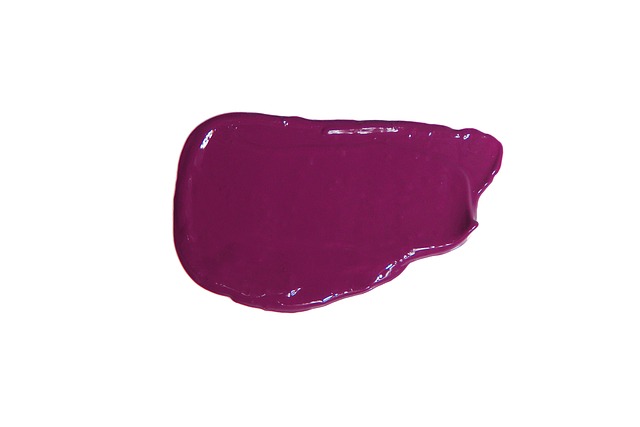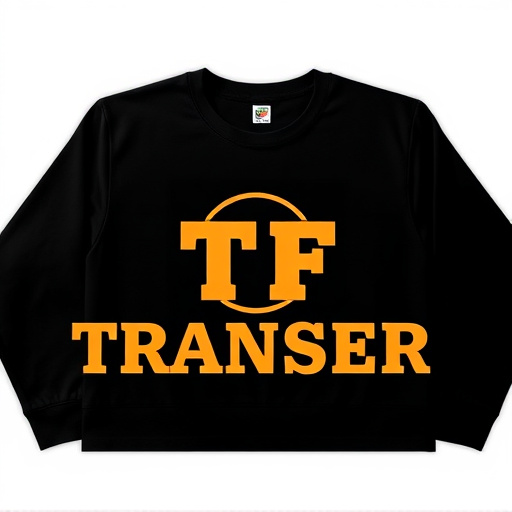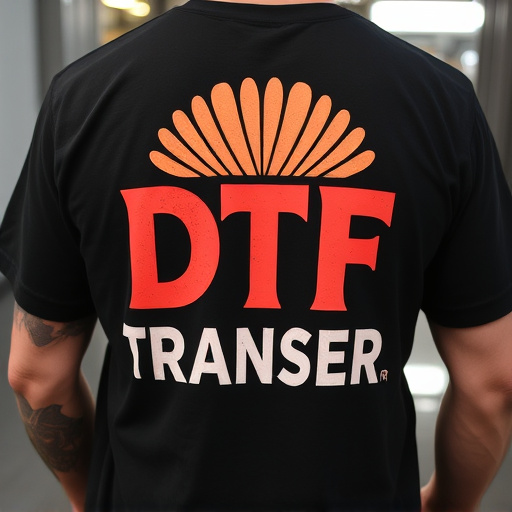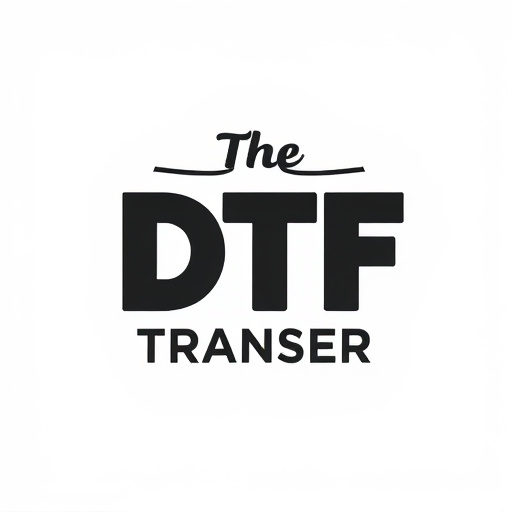Direct-to-Film (DTF) printing is a cutting-edge method offering unparalleled precision and quality in image transfer. Specialized materials, with their unique properties, enhance DTF's capabilities by ensuring vibrant colors, crisp details, and durability on various surfaces like textiles, signage, and packaging. This technology streamlines production, reduces waste, and delivers high-quality results, making it a popular choice for businesses. Future developments aim to improve eco-friendliness and integrate smart features, expanding DTF's applications in fields like wearable tech and interactive packaging.
Direct-to-film (DTF) printing has revolutionized the way we transfer images and designs onto various surfaces, from textiles to ceramics. This innovative technique demands specialized materials that can hold ink for precise, high-quality results. In this article, we explore the crucial role of unique materials in DTF transfers, delving into their properties, selection process, and the diverse applications they enable. Unlocking the potential of DTF with the right substrates paves the way for exciting future innovations.
- Understanding Direct-to-Film (DTF) Printing: A Brief Overview
- The Role of Specialized Materials in DTF Transfers
- Properties of Ideal Ink-Holding Substrates for DTF
- Material Selection: Considerations for Different Film Types
- Applications and Benefits of DTF with Specialized Materials
- Future Prospects and Innovations in DTF Material Technology
Understanding Direct-to-Film (DTF) Printing: A Brief Overview

Direct-to-Film (DTF) printing is a cutting-edge technique that revolutionizes the way we transfer images and graphics onto various surfaces, including film. Unlike traditional methods that rely on intermediate steps, DTF directly applies ink to the desired medium, offering unparalleled precision and quality. This innovative process has gained significant traction in industries such as signmaking, packaging, and even art reproduction.
The beauty of DTF lies in its ability to capture intricate details and vibrant colors with remarkable accuracy. By using specialized materials that hold ink effectively, this printing method ensures consistent results, making it ideal for high-volume production runs or creating unique, custom designs. With direct-to-film technology, the possibilities are endless, enabling professionals to transform their creative visions into reality with speed and efficiency.
The Role of Specialized Materials in DTF Transfers

Specialized materials play a pivotal role in enhancing the quality and efficiency of Direct-to-Film (DTF) transfers. These advanced substances are specifically engineered to hold ink during the transfer process, ensuring precise and vibrant results. Their unique properties allow them to act as a barrier between the print media and the substrate, facilitating a seamless and accurate reproduction of images and text.
The use of such materials has revolutionized DTF printing by mitigating common issues like smudging and bleeding. By providing a stable platform for ink adhesion, these specialized substances enable printers to achieve crisp, long-lasting prints on various surfaces. This is particularly beneficial for applications requiring high-resolution graphics and detailed designs, ensuring that the final output meets professional standards.
Properties of Ideal Ink-Holding Substrates for DTF

For direct-to-film (DTF) transfers, the ideal ink-holding substrate must possess several key properties to ensure optimal results. Firstly, it should have a smooth surface that allows for precise and even application of ink, minimising blobbing or uneven coats. This smoothness facilitates the accurate reproduction of fine details and lines in the transferred image. Secondly, the substrate needs to be compatible with the chosen ink types, ensuring there’s no adverse reaction or interaction that could cause cracking, fading, or smudging over time.
Additionally, the substrate should offer excellent dimensional stability, meaning it doesn’t warp, bend, or deform under the stress of ink absorption or subsequent heating processes. This stability is crucial for maintaining the integrity of the transferred design and preventing any distortions in the final print. Lastly, breathability is an important factor; the material should allow the escape of moisture vapours during drying to prevent ink from lifting or bleeding onto adjacent areas, ensuring crisp, clean lines in the transfer.
Material Selection: Considerations for Different Film Types
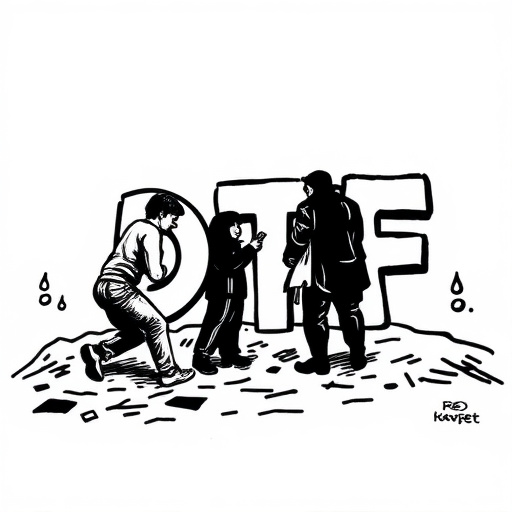
When selecting materials for direct-to-film (DTF) transfers, understanding the compatibility with various film types is paramount. Different films have unique characteristics, requiring specific materials to achieve optimal results. For instance, synthetic films often demand ink that adheres firmly and dries quickly, whereas natural, cellulose-based films may necessitate a more delicate approach to avoid damaging their sensitive surfaces.
Material choices should also factor in the desired outcome, such as vibrant colors, durability, or special effects. High-quality transfer materials can enhance the visual appeal of the final product, ensuring the film’s aesthetics remain intact. Additionally, considering environmental factors like temperature and humidity during the printing process is crucial for successful DTF applications on different film types.
Applications and Benefits of DTF with Specialized Materials

Direct-to-film (DTF) printing has revolutionized various industries, offering a versatile and efficient method for transferring images and designs onto different surfaces. Specialized materials play a pivotal role in enhancing the capabilities of DTF, enabling it to find applications across multiple sectors. From clothing and textiles to signage and packaging, DTF with specialized materials offers numerous benefits.
These innovative materials are designed to hold ink seamlessly, ensuring crisp and vibrant prints. They provide an even surface for ink absorption, minimizing bleed and allowing for detailed designs. Moreover, some specialized materials offer durability and water resistance, making them suitable for outdoor applications and ensuring the longevity of the transferred images. This technology streamlines production processes, reduces waste, and delivers high-quality results, making it a preferred choice for businesses seeking efficient and cost-effective printing solutions.
Future Prospects and Innovations in DTF Material Technology

The future of direct-to-film (DTF) material technology looks promising, with ongoing innovations aimed at enhancing its capabilities and expanding its applications. Researchers and manufacturers are exploring new compositions that offer improved ink hold, better durability, and enhanced adaptability to various substrates. One area of focus is developing eco-friendly materials that reduce environmental impact without compromising performance, aligning with the growing demand for sustainable printing solutions.
Additionally, advancements in DTF technology involve integrating smart features such as responsiveness to external stimuli or interactive properties, opening doors to creative possibilities in fields like packaging, signage, and even wearable technology. These innovations have the potential to revolutionize how we interact with printed materials, making them more functional, engaging, and aligned with modern consumer expectations.



